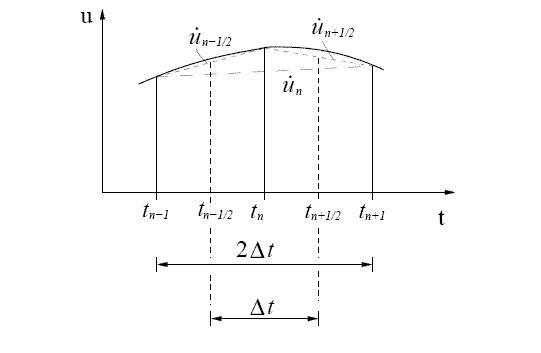Time Integration Methods in Structural Dynamic Analysis (Python Code)

Introduction
Time integration methods or Numerical integration method play a crucial role in the analysis of structural dynamics, allowing engineers to simulate and predict the behavior of structures subjected to time-varying loads. These methods approximate the time-dependent response of structures by discretizing time into small steps and iteratively computing the displacements, velocities, and accelerations at each time step. This one-page description explores the application of time integration methods in structural dynamic analysis.
Importance of Time Integration Methods
In structural engineering, many real-world problems involve dynamic loading conditions, such as earthquakes, wind loads, and vibrations. To accurately analyze and design structures under these dynamic loads, engineers need to understand the structural response over time. Time integration methods enable the numerical simulation of structural behavior, helping engineers predict the dynamic response, evaluate performance, and optimize designs.
Types of Time Integration Methods
Several time integration methods are commonly used in structural dynamic analysis. These include:
- Explicit Methods: Explicit methods, such as the central difference method, Newmark method, and Wilson-θ method, are straightforward and easy to implement. They explicitly update the state variables based on the previous time step’s values. These methods are typically efficient for short-duration and high-frequency dynamic events.
- Implicit Methods: Implicit methods, such as the implicit Newmark method and the HHT-α method, consider the effects of future time steps when updating the state variables. These methods offer unconditional stability and are more accurate for long-duration and low-frequency dynamic events but require solving a set of equations at each time step, resulting in higher computational costs..
Applications of Time Integration Methods
- Seismic Analysis: Time integration methods enable engineers to simulate the response of structures subjected to earthquakes. By applying ground motion records as input, these methods can predict the structural behavior, including displacements, accelerations, and internal forces, during seismic events.
- Vibration Analysis: Time integration methods are utilized to analyze the dynamic behavior of structures subjected to vibration sources, such as machinery, vehicles, or environmental loads. They help assess the structural response, identify resonant frequencies, and evaluate the effectiveness of vibration control measures.
- Transient Analysis: Time integration methods allow engineers to examine the transient response of structures under time-varying loads, such as impact or blast loads. By considering the inertia, damping, and stiffness properties of the structure, these methods provide insights into the structural behavior during transient events.

